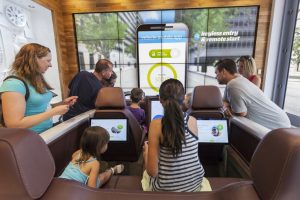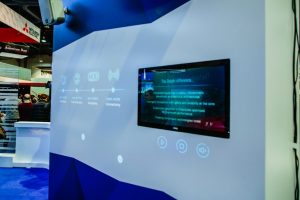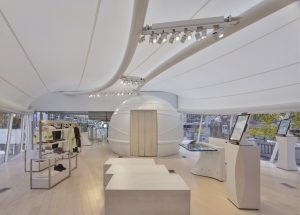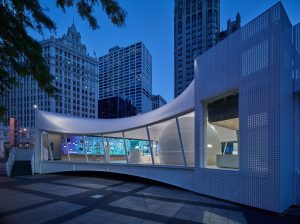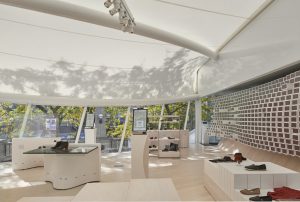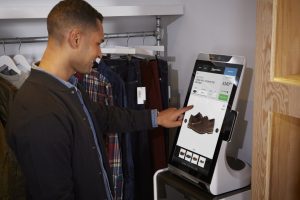There is a new acronym to add to your digital era glossary: It’s IxD, or interaction design. Ideo (Palo Alto, Calif.) co-founder Bill Moggridge has been talking about it since the mid-1980s when he, along with designer and researcher Bill Verplank, first coined the term.
In his 2006 book, “Designing Interactions,” Moggridge predicted the future existence of this new design discipline, dedicated to creating imaginative and attractive solutions in a virtual world, where one could design behaviors, animations and sounds.
It’s a credit to Moggridge’s vision that nearly 30 years later, IxD is still seen as a burgeoning practice. The difference today is that digital hardware and software allow our creative community to apply design disciplines in new ways that impact consumer behaviors. These innovations also speak to the evolution of our design teams and just how much technology is shaping the future of retail.
Lego KidsFest, Austin, Texas / The Industrious/Casey Giessen, Los Angeles
When researching IxD, the overlapping concepts are clear, as many of its terms are commonplace in the retail design industry. In Southern California, as one example, the design community is centered on “user experience,” and is far beyond terms such as “store design” or “visual merchandising.” IxD has become a term to represent the intersection of all of the things we do in this industry to support brands, especially now that digital plays a significant role in our design thinking.
Some of the wins we saw at the Association of Retail Environments (A.R.E.) | POPAI’s Design Awards, including Marina del Rey, Calif.-based Giorgio Borruso Design’s ShopWithMe Chicago holiday pop-up, certainly signify design is much more than aesthetics, and rather, it must deliver satisfaction and enjoyment, a concept Moggridge suggested long ago. ShopWithMe boldly demonstrates that IxD is now at the forefront.
ShopWithMe, Chicago / PRNEWSFOTO/WithMe, Las Vegas
Showcasing products from a variety of brands, the ShopWithMe pop-up included wall-to-wall “smart” fixtures (featuring 900 individual screens) outfitted with glass-top digital displays, and LED-driven visuals within the store. Shoppers making their way through the space could be recommended products based on what they had been browsing in-store. As they passed a highlighted product, the wall physically moved toward them to recommend the item it held.
“We’re creating our very own ‘store of the future.’ Why should a new store have to be physically built for every brand?” asks Danielle Jenkins, co-founder, WithMe (Las Vegas), in a statement released by the company. “Today, the store can be Toms Shoes, and the next week, it can be an entirely new brand without us having to rebuild the store.”
The pop-up utilized RFID technology within fixtures, as well as attached to merchandise, to simplify the shopping and checkout process. Directional audio could interact with individual customers viewing a particular product. And beacon technology sent personalized content to customers on their mobile devices, based on their position within the store.
Rebecca Minkoff SoHo Flagship, New York / Courtesy of Rebecca Minkoff, New York
Other notable projects that have incorporated IxD include Rebecca Minkoff’s SoHo, New York, flagship; Benetton’s Live Windows project in 11 cities; Mistral’s interactive wine-shopping experience in São Paulo; and the AT&T Chicago flagship with its in-store “connected car” feature.
Aside from these projects, I think I can safely assume that most of today’s award-winning store designs have incorporated IxD somewhere into the projects’ DNA. Without it, consumers’ ability to truly connect to product stories won’t happen, and today’s shopper will turn away.
It’s also apparent that future retail design leaders will enter the industry well-groomed to create interactive experiences. About 20 years ago, Carnegie Mellon University (Pittsburgh) was one of the first institutions to offer interaction design as a Master of Design program. Domus Academy (Milan and San Diego) and the Copenhagen Institute of Interactive Design (Copenhagen, Denmark) are other leading institutions driving this conversation into the design of innovative experiences.
As you examine these new IxD examples, consider your own work – it’s important to remember the main point of “experience,” as we often hear today.
Some in the industry have dubbed IxD “transparent design,” implying that those who skillfully employ IxD execute the fundamentals flawlessly. They carefully incorporate behaviors, yet successfully mask barriers. IxD should always make the consumer feel totally in charge of the environment; never the other way around. Today’s customer must feel empowered, or they will go elsewhere.
As more digital elements become part of the design experience, it’s important to remember that IxD is what shapes the outcome. Use these examples as a resource to make your next project stand the test of time, while encouraging customer advocacy and passion for the brand.
Brian is the director of digital strategy & experience design for Atmospheric Design Group, a strategy and design studio headquartered in New York. Follow him on Twitter @briandyches.
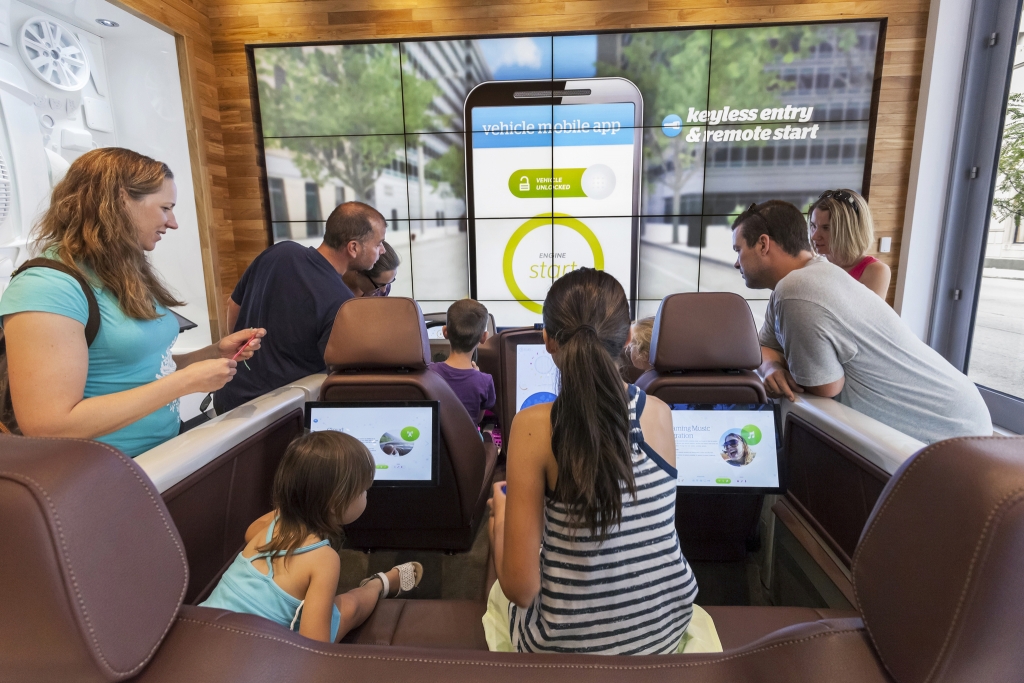

 Photo Gallery2 days ago
Photo Gallery2 days ago
 Headlines1 week ago
Headlines1 week ago
 Headlines2 weeks ago
Headlines2 weeks ago
 Sector Spotlight2 weeks ago
Sector Spotlight2 weeks ago
 Headlines1 week ago
Headlines1 week ago
 Headlines3 days ago
Headlines3 days ago
 Headlines1 week ago
Headlines1 week ago
 Designer Dozen1 week ago
Designer Dozen1 week ago
